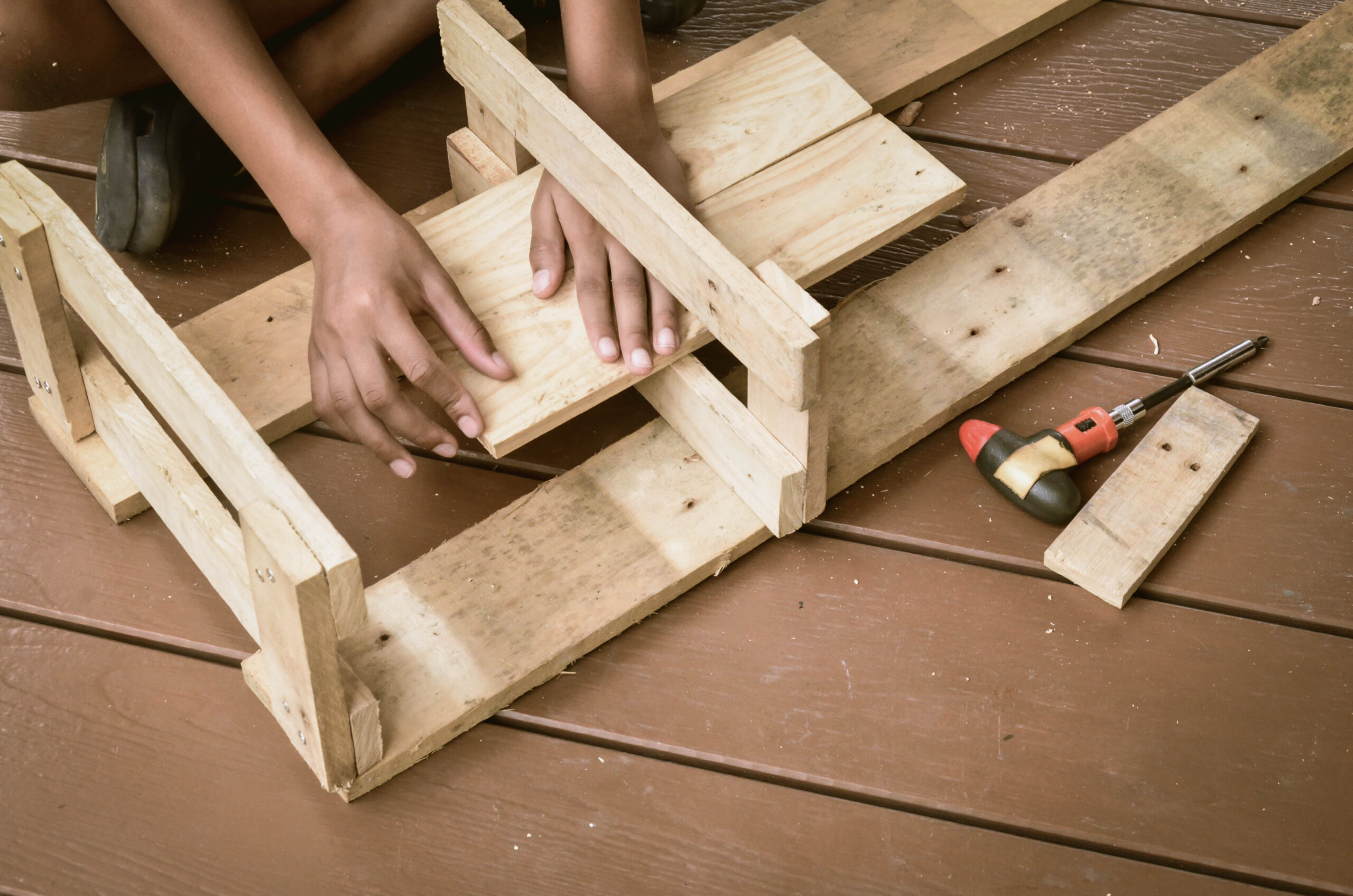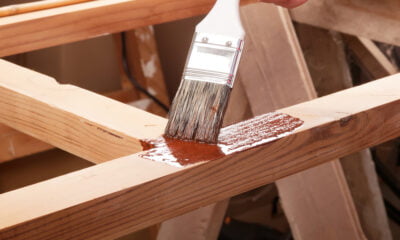

Environment
Implementing the Best Sustainable Construction Practices with Timber
You may surprised to hear how much of an environmental impact the construction industry has. According to figures from 2018, construction companies accounted for 39% of all CO2 emissions around the world.
The good news is that there are ways that construction companies can lower their carbon footprint. One tip is to rely more heavily on timber, which is a renewable resource.
However, not all timber building practices are equally sustainable. You need to make sure that you know how to use timber in the most sustainable way possible if you want to create a green construction model.
The Importance of Using Timber Properly for Sustainable Construction
The construction industry is one of the leading industries in the world. Without this sector, residential, commercial, economic, government, and other types of structures wouldn’t exist. Being one of the world’s largest sectors, it can greatly impact the environment in various ways, specifically the consumption of both renewable and non-renewable resources.
We previously talked about the importance of green construction tips, which includes using renewable resources as much as possible. With the current condition of the environment, there’s a desperate need to lessen the use of these resources and make the production of construction materials more sustainable.
Importance of Environmental Sustainability in Construction
Environmental sustainability aims to maintain the natural resources necessary for human survival and avoid risking the ability of future generations to fulfill their basic needs. As estimated by the European Commission, the construction and building industry is responsible for 11% of the emission of greenhouse gases in Europe, as well as one-third of all wastes produced around the world that ends up in landfills. As stated above, the contribution to carbon dioxide levels is even higher.
Because of these damages to the environment, the construction industry is doubling its efforts to minimize, and possibly eliminate, the harmful actions the industry is implicating to the environment. This is where environmental sustainability comes in. Environmental management is a very important facet of construction.
Environmental sustainability in the construction industry covers issues of process control, use of sustainable building materials, waste management, water management, biodegradation reduction, energy-efficiency, soil conservation, building codes, and other issues that need to be addressed.
Sustainability of Building Materials
In order for a project to be considered sustainable, it must consider the sustainability of materials used in its construction. Construction companies combine sustainable practices and sustainable construction materials to minimize waste and environmental impact.
With demolition and construction materials such as lumber, steel, concrete, and asphalt piling up faster than they can properly be cleared, a growing pressure is being placed on the construction field to reuse and recycle waste. Unfortunately, the vast majority of construction materials aren’t considered sustainable.
The term “sustainable practices” is used to describe methods and products that are both sustainable and beneficial to the environment. For example, green construction involves the use of low-impact and natural materials such as engineered wood or steel in buildings. It also involves materials that are recyclable byproducts from construction and demolition.
By reducing the number of resources used, green construction contributes to a sustainable environment by reducing the amount of greenhouse gases released into the atmosphere. Moreover, when a building is constructed with a sustainable construction plan, it’s less likely to require maintenance for years to come.
Aside from constructing sustainable housing and commercial buildings, it’s worth looking at how construction companies are producing sustainable building materials such as timber, which is prominently used in the construction of various structures.
Timber: A Better and More Sustainable Building Material
Timber, also known as hardwood, is a type of hardwood extracted from different trees to be used as a renewable source of building materials. As long as it remains unspoiled, timber can be harvested without depleting the supply and will continue to be renewable. This is the main reason why the lumber industry has become the most popular wood processing business in the world.
The best and most reliable types of timber that can be used in construction are:
- Hardwood: Maple, mahogany, walnut, cherry, and Tasmanian oak hardwood
- Softwood: Pine, beech, birch, hickory, and cedar softwood
Hardwood has unique properties that make it suitable for a wide range of applications. Most commonly, hardwood is used in the construction of floors and walls. The strength of timber is ideal for withstanding outside elements, harsh weather conditions, wear and tear, and has a relatively longer life expectancy than other types of timber.
These are the top reasons why sustainable timber is among the best construction materials:
- Uses the lowest energy in its processing, production, transport, and consumer use
- Easy maintenance and high durability
- Can be built easily
- Has excellent insulating properties and is better than brick when it comes to reducing energy consumption in residential and commercial buildings
Demand and production of sustainable timber calls for sustaining forests, giving more habitats to many species naturally living in forests
Also, the main reason why the use of hardwood is beneficial is because it doesn’t need to be replaced anytime soon. When trees die, they rot or decay leaving large quantities of leaves behind. When left untreated, this rotting process will eventually cause a large amount of deadwood to settle on the ground. The more deadwood that accumulates, the bigger a problem it will cause for the environment. By using a sustainable source of timber, such as a sustainable plantation, the problem of accumulating wood waste will be reduced drastically, thus minimizing the damage caused to the environment by wood waste.
How Is Timber Produced Sustainably?
Without trusting these sustainable timber products, the efforts of wood-manufacturing companies to make them would be put to waste. Before signing a contract for building construction, it’s important for individuals and organizations to find reliable and certified timber manufacturers that adopt sustainable timber plantation management and production. Check out this video on how the Australian Sustainable Hardwoods (ASH) produce their timber in sustainable methods, which are explained to their consumers:
Timber plantation management can be carried out in a number of different ways. Some management methods include organic management, biofuel management, carbon sequestration, and other ways that involve various types of forest management.
It should also be noted that there are projects that will involve the use of carbon sequestration technology. However, the carbon emissions that result from this will be able to be offset by other projects that are being undertaken. There are many different types of projects that can be carried out by these companies in order to make sure that they don’t have any negative impacts on the environment in any way.
The sustainability of timber production will help to ensure that the company carrying out the project is taking into consideration the impact that the project will have on wildlife, local communities, bodies of water, and so on. These are things that need to be addressed and dealt with properly to ensure that they will not compromise the environment.
Sustainability is a Huge Concern in the Construction Industry
Engineers, architects, and other involved professionals are constantly thinking and embracing the ideas of sustainable construction. Thanks to sustainable timber, the future of construction is being reimagined. As an alternative to non-sustainable materials, timber plantation, processing, and consumption have proved that people can still continue using wood without damaging the environment.


 Environment10 months ago
Environment10 months agoAre Polymer Banknotes: an Eco-Friendly Trend or a Groundswell?

 Environment12 months ago
Environment12 months agoEco-Friendly Home Improvements: Top 7 Upgrades for 2025

 Features9 months ago
Features9 months agoEco-Friendly Cryptocurrencies: Sustainable Investment Choices

 Features11 months ago
Features11 months agoEco-Friendly Crypto Traders Must Find the Right Exchange





























